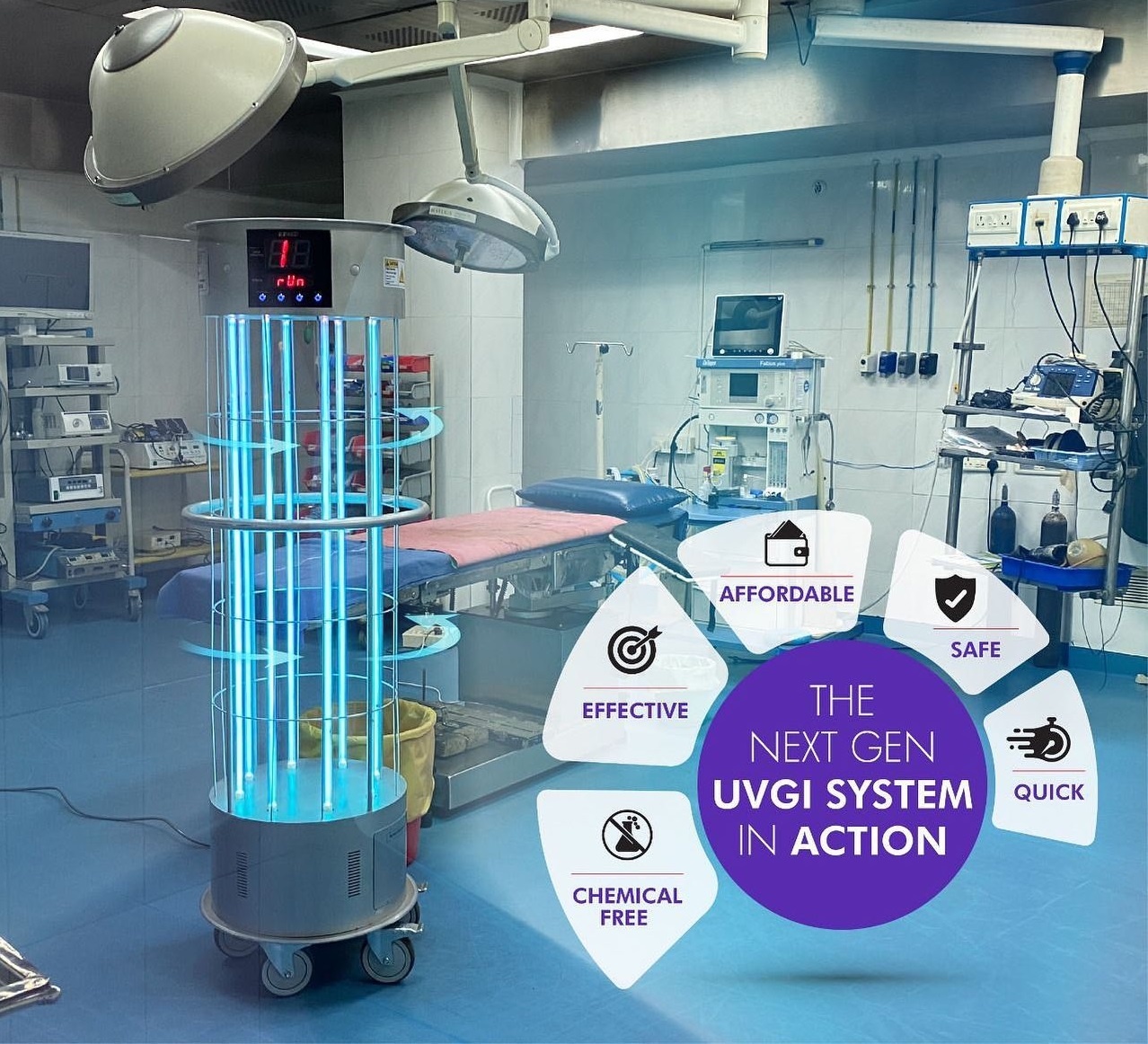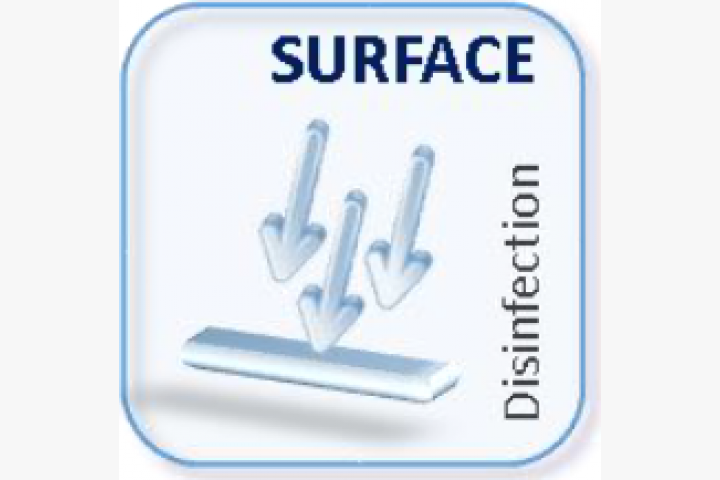Revealing the Conveniences of UV Sanitation: Guaranteeing Disinfected and tidy Areas
While standard cleansing techniques have long been counted upon, advancements in innovation have actually introduced an ingenious remedy that makes certain tidy and disinfected areas: UV disinfection. Additionally, we will delve into the safety and security factors to consider that need to be taken into account when executing UV disinfection. Prepare to uncover a new measurement of tidiness and discover the untapped potential of UV sanitation.

The Science Behind UV Sanitation
UV sanitation is a medically tested approach that utilizes ultraviolet light to get rid of unsafe microorganisms from surfaces and water. The science behind UV sanitation depends on the ability of UV-C light to damage the DNA and RNA of bacteria, making them incapable to duplicate and causing their ultimate fatality. UV-C light drops within the wavelength variety of 200 to 280 nanometers, which is very reliable in destroying germs, infections, and various other microorganisms.
When subjected to UV-C light, the hereditary product of microbes soaks up the power from the light, bring about the development of thymine dimers. These dimers interfere with the regular duplication and transcription procedures of the microbes, hindering their ability to make it through and reproduce (uv surface disinfection). The DNA and RNA damage brought on by UV-C light is deadly to the microbes, making UV disinfection a efficient and reliable approach for eliminating a vast array of microorganisms
UV disinfection is especially helpful in settings where typical chemical anti-bacterials may be inadequate or not practical. It is a non-chemical approach that does not leave any type of deposits or unsafe byproducts, making it risk-free for usage in food processing, healthcare centers, water treatment plants, and various other sectors. Furthermore, UV sanitation is eco-friendly, as it does not add to the advancement of antibiotic-resistant microorganisms or various other damaging pollutants.
Performance of UV Disinfection on Virus
The performance of UV sanitation in eliminating microorganisms has been thoroughly studied and verified in countless scientific researches. UV radiation has the capability to suspend a broad array of bacteria, including viruses, bacteria, and fungis, by harming their DNA or RNA. This prevents them from reproducing and causing infections.
One research study released in the American Journal of Infection Control discovered that UV sanitation worked in lowering the presence of several drug-resistant microorganisms in healthcare facility spaces. An additional study carried out by the National Institute for Occupational Safety and security and Wellness demonstrated that UV disinfection had the ability to remove 99.9% of the flu infection on surfaces.
UV sanitation has additionally revealed promise in combating the spread of healthcare-associated infections (HAIs) According to a research study released in The Lancet, using UV-C light along with basic cleansing methods significantly decreased the incidence of HAIs in a health center setting.
Furthermore, UV sanitation has actually proven to be effective against emerging pathogens, such as the severe intense respiratory system disorder coronavirus 2 (SARS-CoV-2), which creates COVID-19. A study conducted by the National Arising Transmittable Illness Laboratories showed that UV-C light can inactivate the virus on surfaces within seconds.
Applications of UV Disinfection in Different Setups
With its tried and tested effectiveness in eliminating virus, UV disinfection has actually discovered applications in a variety of setups. UV sanitation is likewise advantageous in water therapy plants, where it is utilized to eliminate dangerous microorganisms and offer safe alcohol consumption water.
Another crucial application of UV disinfection impends purification market. UV air purifiers are made use of in property, commercial, and industrial setups to eliminate air-borne germs, infections, and mold spores. This modern technology is particularly beneficial in environments where people are more at risk to respiratory infections, such as health centers, schools, and office complex.
Furthermore, UV sanitation is increasingly being made use of in public transportation systems, such as buses and trains, to preserve tidy and disinfected spaces for guests. UV light is employed to disinfect surfaces and air inside the automobiles, lowering the risk of spreading transmittable diseases.
Advantages of UV Disinfection Over Standard Techniques
In comparison to conventional techniques, UV sanitation offers a variety of unique advantages that make it a more effective option in numerous sectors and setups. One significant advantage is its performance against a wide range of bacteria, consisting of microorganisms, fungis, and infections. Unlike chemical disinfectants that may have limited efficiency against specific microorganisms, UV disinfection is a non-selective process that can kill or inactivate a broad range of damaging organisms.
An additional benefit of UV sanitation is its capability to supply fast and effective sanitation. Standard sanitation techniques frequently require longer contact times or multiple steps to attain the wanted level of disinfection. On the other hand, UV light can give constant and immediate sanitation, lowering downtime and boosting efficiency in various applications.
UV sanitation additionally uses a risk-free and eco-friendly option to standard disinfection approaches. uv surface disinfection. Unlike chemical representatives, UV light does not leave behind any kind of dangerous residues or by-products, making it ideal for use in delicate atmospheres such as food processing centers, healthcare settings, and water treatment plants
Furthermore, UV disinfection is a cost-effective remedy in the future. While the upfront financial investment for UV sanitation systems might be greater than conventional approaches, the operational prices are generally reduced. UV lamps have a lengthy lifespan blog and need minimal maintenance, causing minimized labor and replacement expenses.
Safety And Security Considerations for UV Sanitation
Considering the prospective risks related to UV sanitation, it is important to attend to the safety considerations associated with implementing this innovation. UV sanitation utilizes ultraviolet light to kill or suspend microbes, making it an effective technique for disinfecting various surfaces and items. It is essential to comprehend that UV radiation can additionally pose risks to human health and wellness if appropriate safety and security procedures are not complied with.
First and leading, direct exposure to UV radiation can cause harm to the skin and eyes. Extended direct exposure can result in sunburn, skin damages, and even an enhanced threat of developing skin cancer. For that reason, it is critical to make sure that UV disinfection systems are appropriately enclosed and outfitted with security functions such as automated shut-off systems or movement sensing units to stop unexpected direct exposure.

In addition, appropriate training and education are crucial for those liable for operating UV sanitation systems. They ought to recognize the potential dangers, recognize the safety and security procedures, and know how to manage and maintain the devices properly.
Verdict
In final thought, UV sanitation uses many advantages in guaranteeing clean and sterilized rooms. Its performance in eliminating pathogens has actually been verified through scientific research study. UV sanitation can be used in different settings, consisting of healthcare facilities, food processing plants, and water treatment systems. Contrasted to typical approaches, UV sanitation has benefits such as faster sanitation times, minimal chemical use, and no damaging byproducts. Safety considerations need official statement to be taken into consideration to avoid prospective risks related to UV direct exposure.
UV disinfection is a medically tried and tested approach that utilizes ultraviolet light to get rid of harmful microorganisms from surfaces and water. The DNA and RNA damages caused by UV-C light is dangerous to the microbes, making UV sanitation a reliable and reputable method for eliminating a broad array of microorganisms.
An additional benefit of helpful site UV disinfection is its capability to offer fast and efficient sanitation. UV disinfection utilizes ultraviolet light to kill or inactivate microbes, making it an effective approach for sterilizing different surface areas and things. Contrasted to standard approaches, UV sanitation has benefits such as faster disinfection times, very little chemical usage, and no damaging byproducts.
Comments on “Releasing the Power of UV Surface Disinfection: Securing Versus Dangerous Microorganisms”